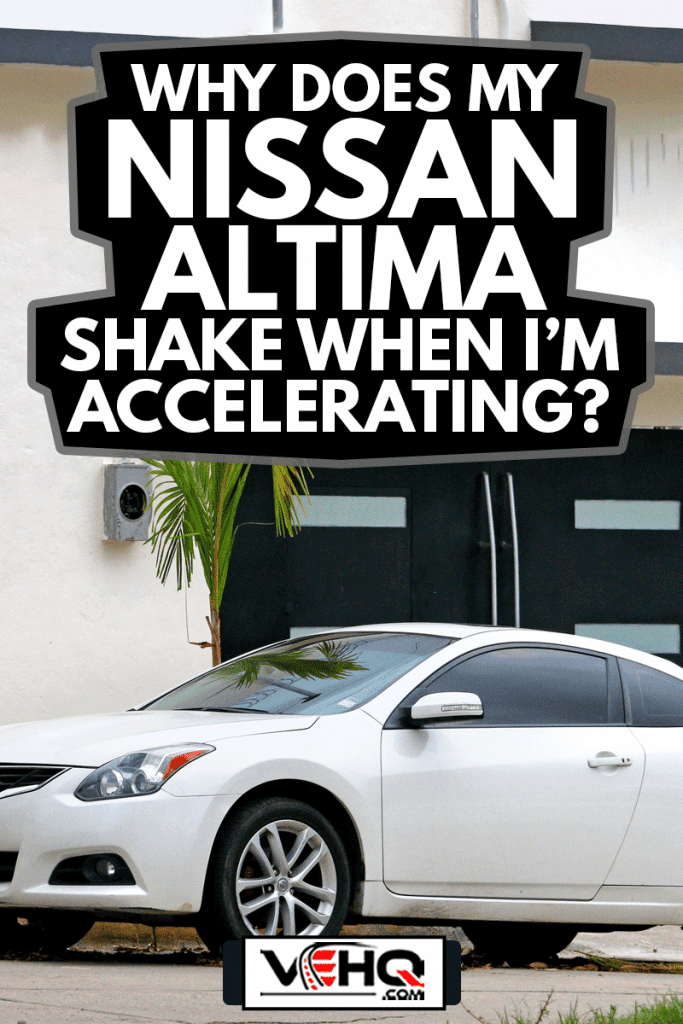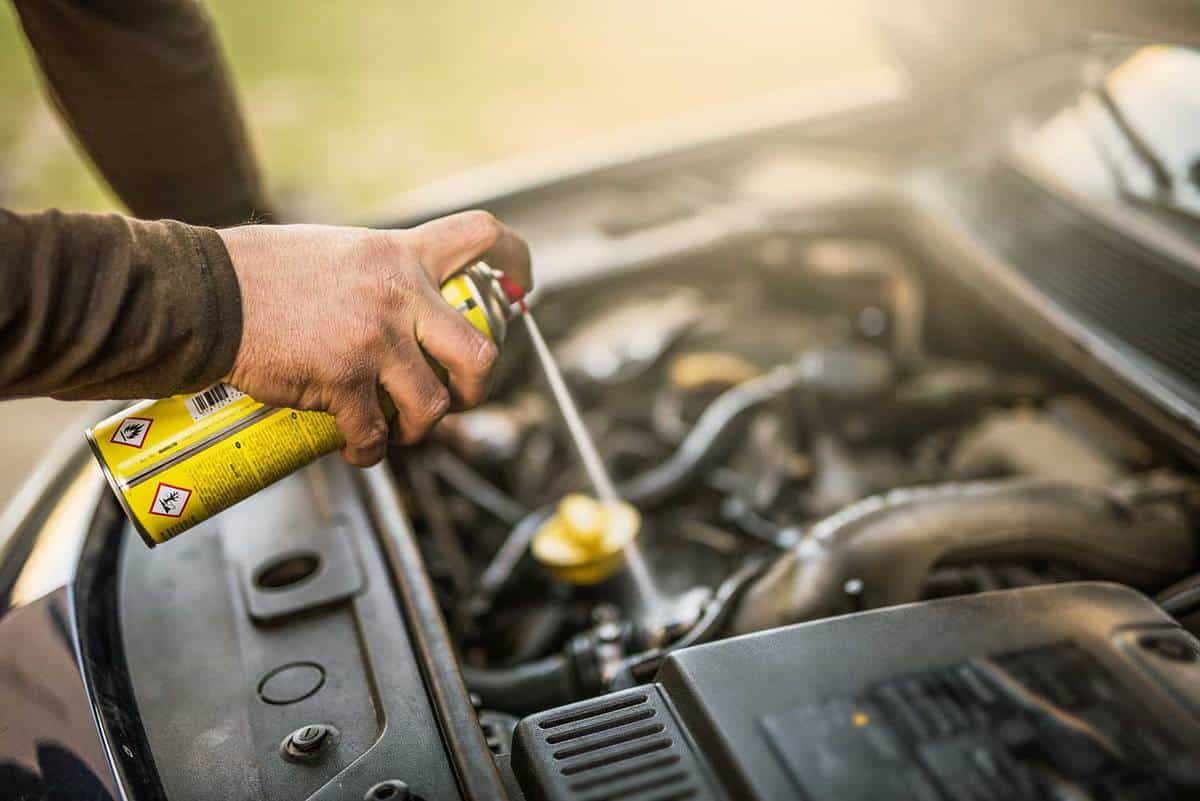Picture this: You're trying to merge onto the highway, and your Nissan Altima begins to shake. It seems the faster you try to accelerate, the more the car shakes. So, this isn't typical performance, and if you're wondering what might be causing it, you've come to the right place. We've researched the topic in-depth and have an answer for you.
There is more than one problem that might cause a Nissan Altima to shake when it is accelerating. Common issues include engine misfiring, damaged axles, tire issues, or broken or loose motor mounts.
We've given you a few causes to consider, but keep reading as we discuss these further. We'll elaborate on how to diagnose the problem and how to fix it. Additionally, we will answer some other questions you might have about your Nissan Altima.

What's Causing The Shake In An Altima
A shaking car can seem scary, and for good reason. When you don't know the cause of the shaking, you don't know how serious the problem is or how serious it might become.
Before trying to diagnose the problem, take a moment to think about whether the vehicle shakes at any other time, even if it isn't as noticeable, or if the vehicle makes any new or strange noises. Other symptoms can be indicative of the issue. For example, if the vehicle shakes during acceleration and while it is idling, knowing this will help narrow down the cause of the problem.
Engine Misfiring

An engine misfire is likely going to be the easiest to diagnose. This is because your check engine light will almost always come on when your engine is misfiring. Stop by an auto store such as AutoZone to get your codes read. Multiple codes might show up, but you'll at least have a general idea of where to begin.
Spark Plugs
One of the most common reasons an engine will misfire is bad spark plugs. You can usually tell if a spark plug has fouled just by looking at it. If you have a faulty spark plug, you'll also notice a slight vibration when the car is idle.
Spark plugs are relatively inexpensive, and if you're mechanically inclined, you can change them out yourself. This will save you more money on labor. There are lots of YouTube tutorials on the process. Check out one of them below:
Click here to see Nissan Altima 2007-2013 Spark Plugs on Amazon.
Damaged Axles
Axles are an essential component of your car. At least, if you want your wheels to be able to turn, they are. However, axles, like most other components, can also become damaged.
Constant velocity joints, also known as CV joints, are often the axle-related part causing your car to shake. When the CV's protective boot becomes damaged, so can the CV joint. Your car will begin to shake and will likely get worse until the CV joint is fixed.
How To Diagnose An Issue With Your CV Joint
A sign of a bad cv joint is vibrations, but other signs include knocking or clicking sounds or grease on the outside of your tires. If you have any of these additional symptoms, there's a good chance your issue is with your CV joint. The clicking or popping noise will occur when you try to turn the vehicle.
Replacing a CV joint on your axle by yourself can be done. However, you will need several power tools. If you don't already have the equipment required for car repairs, you should consider hiring a professional. Here's a video tutorial, so you can get a general idea of what's needed:
Tire Issues
Numerous tire issues could cause your car to shake when accelerating. Worn or damaged tires might be the cause, or they may need aligning. You may have to check the air pressure of your tires. A tire with too much or too little air in them can cause a bumpy ride. Fortunately, most tire issues are easy to diagnose and fix.
If your car needs an alignment, you may also notice it pulling to one side, a shakey or noisy steering wheel, or uneven or excessive wear on your tires.
How often to align a Nissan Altima?
Wheel alignments should be part of your regular maintenance on your vehicle. Typically, it's a good idea to get your Nissan Altima aligned every time you take it for an oil change.
You can also go by mileage or time and get your wheels aligned every 6,000 miles or every six months, respectively. Whichever form of measurement you decide to go with, the main idea is that it is done regularly. If you neglect to get your wheels aligned, your car might pull to one side, and your tires will face more uneven wear and tear.
Since we're on the subject of tires, check out one of our other posts on the topic here: Do Tires Need to Be Balanced When Rotated?
Broken or Loose Motor Mounts
Engine mounts keep your engine in place. If one becomes broken or loose, you may experience heavy vibrations and noise coming from the general area of the engine itself. A broken or bad engine mount will make a lot of noise, so if you're experiencing this along with a lot of shaking as you accelerate, the motor mount is likely the culprit.
How many engine mounts are in a Nissan Altima?
Depending on the year of your vehicle, your Nissan Altima will have between two and four-engine mounts. All cars, regardless of their make, will usually have at least two mounts. The passenger side mounts are often the most common to break and need replacing.
Click here to see Nissan Altima 2007-2017 Engine Mounts on Amazon.
Is it worth replacing engine mounts?
You should replace engine mounts as soon as you realize there is an issue with them. Eventually, engine mounts will fail due to age or stress.
Depending on how long you plan to drive your car, the chances of one needing to be replaced are pretty high. If the engine mounts are broken and you continue to drive, you could damage your engine further, especially if there is a lot of movement.
Replacing engine mounts can be a difficult job, depending on where they are located. It can be pricey because of the labor involved. If you doubt your ability to do it yourself, you should consider hiring a professional. However, for an example of how to diagnose and replace your engine mounts, check out this YouTube video as the mechanic walks us through the process:
If you're sure, your shaking originates in the engine area of your vehicle, take a look at this other blog post for more information: Why Is My Car Engine Shaking? (And How to Fix It)
Can I still drive my car if it shakes?
We understand that car repairs can be pricey and time-consuming, and you may be tempted to continue driving your car. However, it is not recommended to continue driving your vehicle if it is shaking. Since shaking can occur because of several problems, you will want to get your car looked at as soon as possible.
Depending on the issue, driving the vehicle while shaking could lead to even more mechanical problems. Not to mention, it could be dangerous to you and other drivers on the road if you are driving an unsafe vehicle.
Is there a recall on Nissan Altimas?
![Nissan Altima on display during the 2018 New York International Auto Show, Can You Flat Tow A Nissan Altima? [And How To]](https://vehq.com/wp-content/uploads/2021/10/Nissan-Altima-on-display-during-the-2018-New-York-International-Auto-Show.jpg)
It is essential to keep up to date on any vehicle recalls that might have been issued. Recalls are often issued when the manufacturer has deemed a part of the vehicle an unnecessary safety hazard. The manufacturer will usually notify you when a recall is issued, but you can also find the information yourself.
Nissan USA offers an online tool where you can input your vehicle's VIN to see any applicable recalls on your vehicle. Currently, Nissan USA has three recalls listed, with one involving 2018-2019 Altimas. The recall is in regards to the Rear Visibility System. While it isn't an extremely high-risk problem, it can cause reduced visibility when the driver begins to reverse.
Final Thoughts
A shaking vehicle should be diagnosed as soon as possible. Driving the car without knowing what is causing the shaking could lead to more repairs. Hopefully, our article has provided some starting points for you to figure out why your Nissan Altima is shaking when you accelerate, and you'll be safe driving again in no time. Good Luck!



I haven’t tried nissan altima. I’m curious